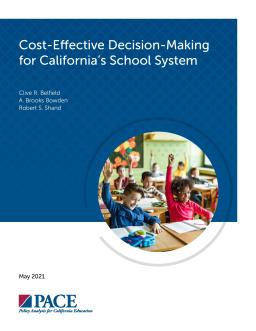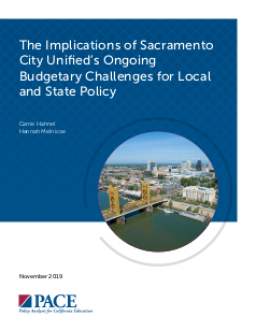Published
Summary
A report on the importance of economic analysis in decision-making in CA's school system. Economic evaluations can help identify the most effective policies and interventions while reducing waste and ultimately improving outcomes for students. Studied here is the cost-effectiveness analysis (CEA) method, its benefits, and its broad applicability. To be more influential, economic analysts should focus on policies and programs that require significant funding, investigate how results are relevant to decision-makers, and consider how resources can be allocated towards cost-effective programs.
The Implications of Marin’s Rising Pension Costs and Tax Revolt for Increasing Education Funding
Published
Summary
Marin County's schools face rising costs, particularly for pensions and declining enrollment, which is not sustainable. Teacher salaries and recruitment are affected, with limited public awareness of district flexibility to respond to rising pension costs. Parcel taxes have faced opposition, and a statewide funding solution is necessary to support student success and stop financial distress. Building awareness of pension costs' impact is essential, and benefits and salaries are necessary to retain teachers.
Published
Summary
This case study examines the looming deficit faced by Sacramento City Unified School District and the challenges it poses for students, including declining enrollment, increasing special education and pension costs. It also highlights the impact of SCUSD's budget practices and labor-management relations on its current budget situation. The report offers considerations for policymakers, including addressing unaffordable teacher benefits and increasing funding. Although the district's fiscal crisis cannot be solved overnight, stabilizing the situation and restoring public confidence are crucial.
Published
Summary
A study conducted for the Los Angeles County Department of Public Social Services aimed to determine the supply and demand of licensed childcare in the county, with a focus on low-income communities and special types of care. The survey analyzed data at three levels: county-wide, service planning areas, and supervisorial districts. Results showed disparities in childcare supply across the county, with shortages in special types of care and little information on where childcare is needed.



